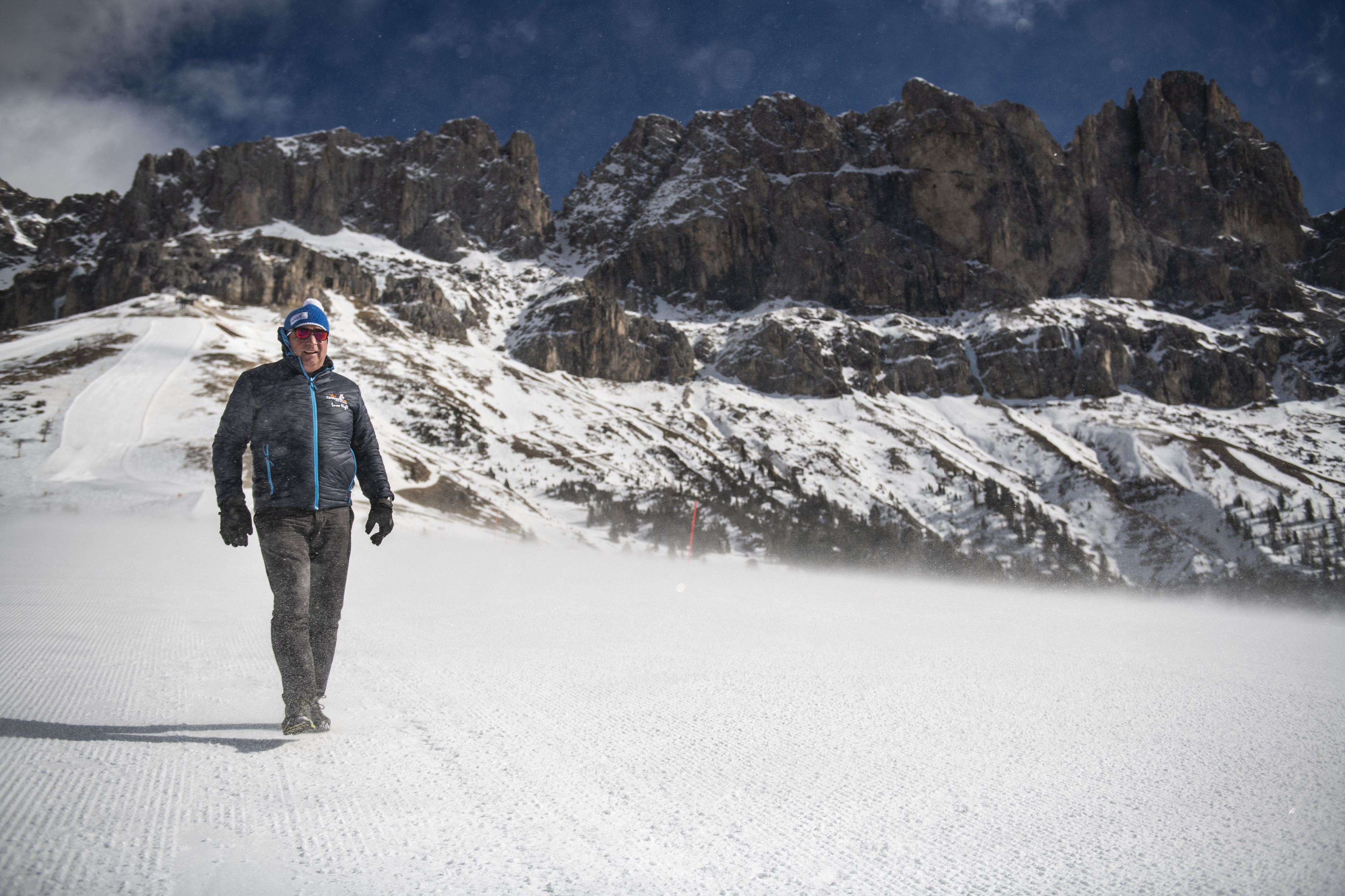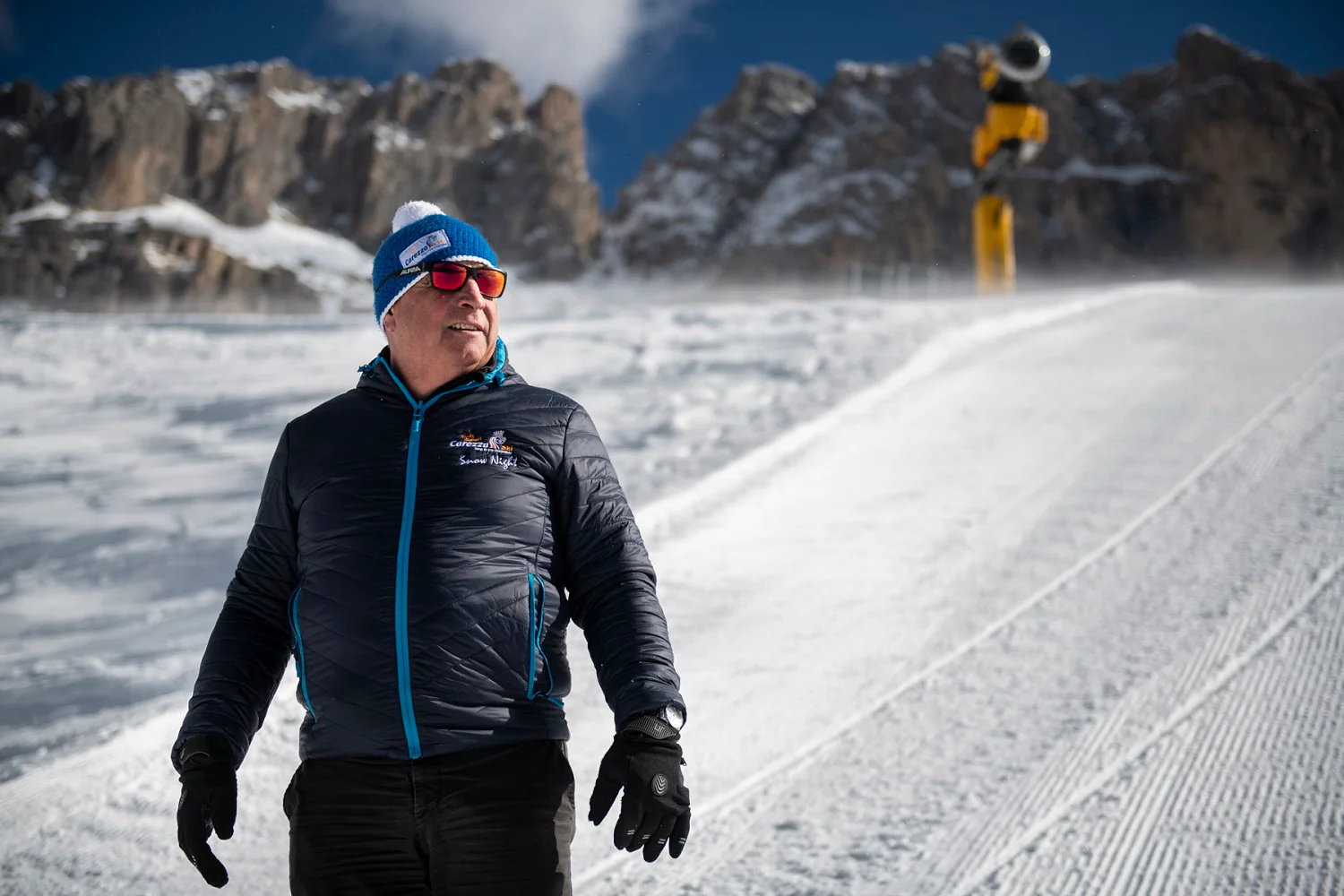The snow pioneer
Georg Eisath was instrumental in building the first South Tyrolean snow gun some 40 years ago. Today, the co-founder of TechnoAlpin is a cable car operator with a heart of green. At the Carezza ski resort, flurries of technical snow carpet the slopes when the temperatures are just right.
“Go ahead and switch on that snow gun for a few moments they’ll say. We need a tad bit more snow up there they tell me. To this I reply: no thanks it’s too expensive and not worth it," says Georg Eisath. Of course, many of the larger cable car companies wouldn’t hesitate, he explains. But Georg Eisath is not like most ski-resort operators. And this is no conventional ski resort. “Switching on the 500 kilowatt pump for a single snow gun is too expensive,” says Eisath who emphasises that such measures are simply unthinkable for smaller ski resorts.
Georg Eisath designed his first snow guns in the 1980s as an alternative to the propeller machines from abroad, which proved to be sub-optimal for snow production south of the Alps. In 1990, together with Walter Rieder and Erich Gummerer, he co-founded TechnoAlpin. Within a very short time, the company became the world market leader in technical snowmaking. Then, in 2008, Eisath switched teams and instead joined the ranks of cable car operators by simultaneously purchasing the majority of cable car company licenses at the then ailing ski resort between Welschnofen/Nova Levante and the Karerpass pass in the Eggental valley close to his home. Since that time, Eisath has invested over 40 million euros in all-new snowmaking systems, cable cars, lifts and slopes and named the ski resort “Carezza.”


